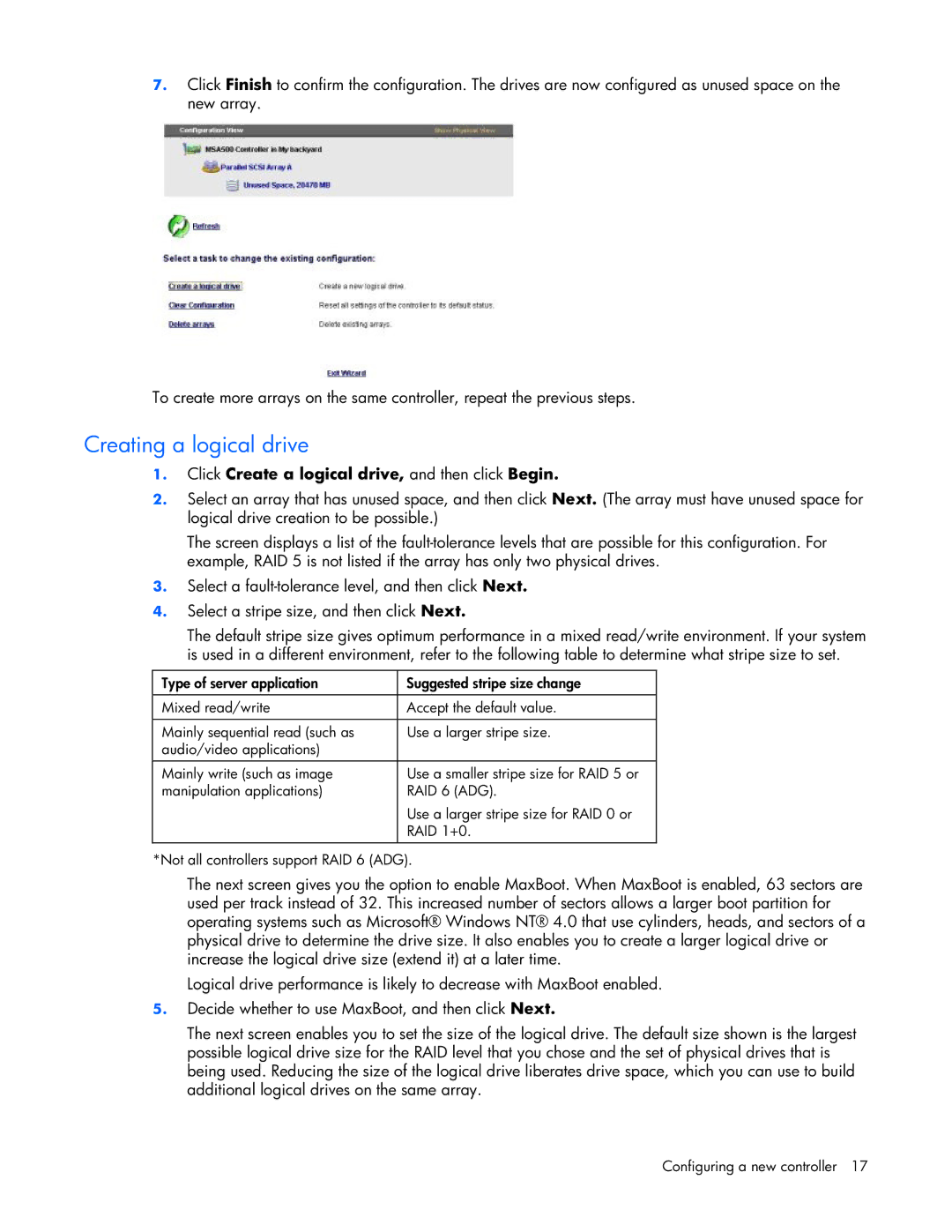
7.Click Finish to confirm the configuration. The drives are now configured as unused space on the new array.
To create more arrays on the same controller, repeat the previous steps.
Creating a logical drive
1.Click Create a logical drive, and then click Begin.
2.Select an array that has unused space, and then click Next. (The array must have unused space for logical drive creation to be possible.)
The screen displays a list of the
3.Select a
4.Select a stripe size, and then click Next.
The default stripe size gives optimum performance in a mixed read/write environment. If your system is used in a different environment, refer to the following table to determine what stripe size to set.
Type of server application | Suggested stripe size change |
|
|
Mixed read/write | Accept the default value. |
|
|
Mainly sequential read (such as | Use a larger stripe size. |
audio/video applications) |
|
|
|
Mainly write (such as image | Use a smaller stripe size for RAID 5 or |
manipulation applications) | RAID 6 (ADG). |
| Use a larger stripe size for RAID 0 or |
| RAID 1+0. |
|
|
*Not all controllers support RAID 6 (ADG).
The next screen gives you the option to enable MaxBoot. When MaxBoot is enabled, 63 sectors are used per track instead of 32. This increased number of sectors allows a larger boot partition for operating systems such as Microsoft® Windows NT® 4.0 that use cylinders, heads, and sectors of a physical drive to determine the drive size. It also enables you to create a larger logical drive or increase the logical drive size (extend it) at a later time.
Logical drive performance is likely to decrease with MaxBoot enabled.
5.Decide whether to use MaxBoot, and then click Next.
The next screen enables you to set the size of the logical drive. The default size shown is the largest possible logical drive size for the RAID level that you chose and the set of physical drives that is being used. Reducing the size of the logical drive liberates drive space, which you can use to build additional logical drives on the same array.
